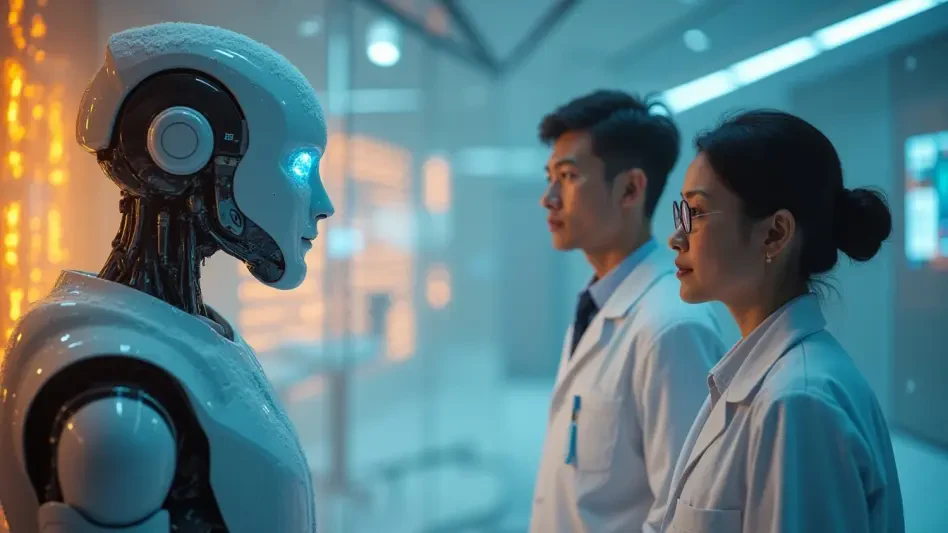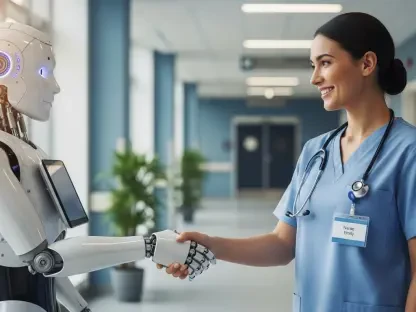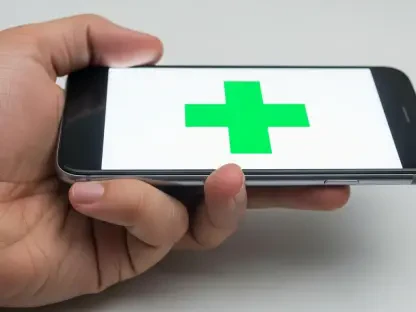In the ever-evolving landscape of medical education, traditional teaching methods have faced challenges in effectively preparing students for the intricacies of clinical environments. Incorporating AI-Powered Simulation Tools into medical training programs has become an innovative solution by simulating real-world medical scenarios, providing invaluable experiential learning opportunities that enable students to bridge the gap between theoretical knowledge and practical application.
Overview of AI-Powered Simulation Tools
AI-Powered Simulation Tools leverage advanced technologies to mimic clinical conditions with remarkable fidelity. These tools integrate artificial intelligence, machine learning, and virtual reality to create immersive learning environments. Such environments facilitate hands-on experience without exposing students to the risks associated with real patient interactions. The emergence of these tools aligns with broader technological trends in medical education, where the demand for high-quality, realistic training experiences is on the rise.
Expanding on these principles, simulation tools offer educators the flexibility to design diverse clinical scenarios tailored to specific learning objectives. Tools like SimVox enable students to interact with realistic manikins and virtual patients, paving the way for a more engaging and effective educational experience. As a pivotal element of modern medical curricula, these tools provide students with opportunities to refine their clinical skills and decision-making abilities in a controlled environment.
Features and Performance of AI-Powered Tools
Simulation Accuracy and Realism
At the core of AI-Powered Simulation Tools is their ability to create highly accurate and realistic simulations. By replicating complex medical scenarios, these tools enhance clinical training by allowing students to practice and refine skills in a risk-free environment. The performance of these simulations is measured by their ability to mimic real-world conditions accurately, impacting students’ preparedness and confidence.
The significance of accuracy and realism in these tools cannot be overstated. High-fidelity simulations enable students to experience a wide range of medical situations, from routine procedures to critical emergencies, without direct faculty intervention. This independence fosters student autonomy, ensuring they develop crucial clinical competencies and judgment.
Interactive Learning Interfaces
Another defining feature of AI-Powered Simulation Tools is the sophisticated interactive learning interfaces they offer. These interfaces incorporate cutting-edge technology to facilitate engaging and responsive learning experiences. From user-friendly dashboards to intuitive controls, they provide seamless interaction with virtual medical environments, enhancing student engagement.
The real-world usage of these interfaces has been transformative. Students can actively participate in medical scenarios, receive immediate feedback, and adapt their approach based on outcomes. Consequently, these interfaces contribute to a deeper understanding of clinical processes and foster a proactive learning environment, effectively preparing students for challenges they may encounter in their careers.
Emerging Developments and Innovations
AI-Powered Simulation Tools continue to evolve, with new innovations and trends shaping their trajectory. Recent developments include integration with augmented reality and enhancements in machine learning algorithms to deliver personalized learning experiences. These advances allow simulations to become even more lifelike and adaptable, catering to diverse educational needs.
Moreover, shifts in educational and industry behavior drive ongoing refinement of these tools. Institutions are increasingly recognizing the value of incorporating AI simulations into their curricula, leading to heightened investment and research. As a result, simulation technology is poised to become an indispensable component of medical education, redefining how healthcare professionals are trained.
Impact and Applications in Real World
The real-world applications of AI-Powered Simulation Tools have led to substantial positive impacts across multiple sectors. In medical training, these tools are instrumental in preparing students for the demands of the healthcare industry. They provide a risk-free platform for developing practical skills, such as patient assessment and clinical decision-making.
Unique use cases demonstrate the effectiveness of simulation tools in medical education. Institutions like the University of West Georgia have successfully integrated these tools, transforming their nursing programs. Utilizing advanced simulation equipment, students engage in realistic patient interactions, fostering clinical confidence and readiness for real-world scenarios.
Challenges and Limitations
Despite their promise, AI-Powered Simulation Tools face several challenges and limitations. Technical hurdles, such as ensuring seamless integration between various components, can impact their performance. Regulatory issues and market obstacles also pose significant barriers to the widespread adoption of these technologies.
To address these challenges, ongoing development efforts focus on enhancing interoperability, improving user interfaces, and navigating regulatory landscapes. By addressing these limitations, the potential of AI-Powered Simulation Tools can be fully realized, driving education forward and benefiting future healthcare professionals.
Future Perspectives and Potential
Looking ahead, the future of AI-Powered Simulation Tools appears promising, with potential breakthroughs poised to reshape medical education. The integration of advanced technologies such as natural language processing and intelligent tutoring systems could further enhance learning experiences, providing students with personalized guidance and feedback.
These advancements hold the promise of long-term impacts on both medical education and broader societal needs. As AI-Powered Simulation Tools continue to evolve, they are expected to play a pivotal role in achieving high standards of healthcare training, ultimately contributing to better patient care and improved healthcare outcomes.
Final Assessment
In conclusion, AI-Powered Simulation Tools have emerged as a transformative force within the medical training industry. With their accurate simulations, interactive interfaces, and ongoing innovations, these tools have redefined the way healthcare professionals are educated. Despite challenges, the trajectory of this technology remains upward, with exciting possibilities on the horizon. By leveraging the capabilities of AI-Powered Simulation Tools, institutions can ensure future healthcare professionals are equipped with the skills and competencies needed to excel in the ever-evolving medical landscape.









